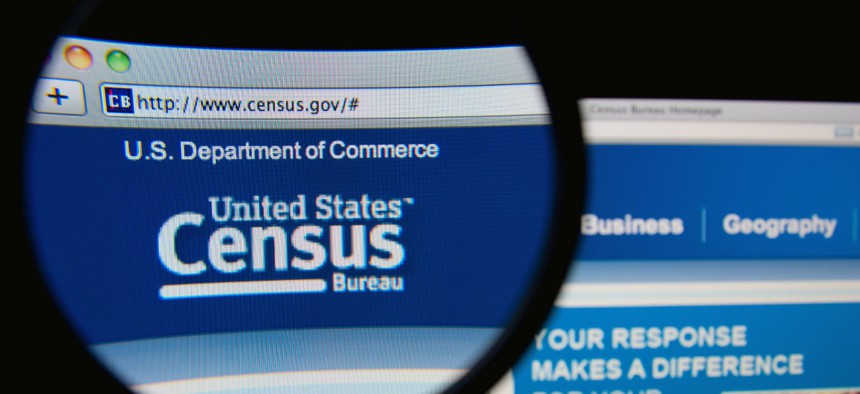
Gil C / Shutterstock.com
2020 Census Called Vulnerable to Online Fraud
Bureau-commissioned report cites motives ranging from entertainment to anti-government protest.
The next decennial census, planned as the first to depend chiefly on the Internet for data collection, is vulnerable to fraud by pranksters, anti-government protesters, phishers seeking personal data and even manipulators of House of Representatives reapportionment, a report found.
As first reported by the Federation of American Scientists Secrecy blog, the new report by Mitre Corp. for the bureau’s JASON scientific advisory panel concluded that “Non-organized fraud from random individuals (e.g. pet names listed as family members) is unlikely have any significant impact on the outcomes of the U.S. Census. And individual mischief, for example, a response from ‘Seymour Butts of 6 E. Psycho Path’ is to be expected,” analysts wrote.
“But large-scale, organized fraud could pose a threat to the integrity of the census, and the threshold for effectively manipulating the census process is surprisingly low,” the report said.
Use of the Internet in the 2020 count is designed to help the bureau reach previously undercounted populations to improve accuracy. But the JASON team stressed the importance of cybersecurity.
The current census plan is to send households via U.S. Mail a postcard containing an Internet link as text URL and scannable QR code. That postcard will also display a printed, human-readable unique identification that links the postal delivery address to an entry in the bureau’s master address file, planners said. Respondents will enter this identifier on the Web form accessed by the URL and then complete the census.
New problems may arise, however, because of “the Internet’s lower barrier of entry to the submission of fraudulent or mischievous forms, and the existence of a ‘hacker mentality’ that affects all things Internet. This suggests that some level of additional validation of non-ID forms is prudent, even if it goes beyond what was done in 2010,” the analysts wrote. “The goal is not to significantly change the rules for being counted, but only to avoid unfortunate surprises associated with the transition to the Internet.”
Today’s political climate means that “The 2020 Census will take place against a background of long-term increasing distrust of government, and also increased awareness of the government’s collection of data on the population,” the report said.
With proper preparation by the bureau, JASON specialists said, “attempts to significantly manipulate the census by the fraudulent use of non-ID returns will be readily detectable and mitigatable. Indeed, the greater danger in some respects is that the process of validating non-ID respondents will result in their experiencing substantially higher barriers to being counted, compared to ID respondents. Such barriers” the report said, “would negate the Internet’s prospective ability to better reach undercounted populations.”
JASON found that “identity validation” as practiced in ordinary commerce is likely not a useful model for the census, because its ratio of penalties for false positives to those of false negatives puts it in a vastly different regime from the census, the report said. The best check against fraud from non-ID respondents is direct evidence of their unique address, such as a photo of their door or an administrative record containing their address.
Mobile devices offer important opportunities for increasing the accuracy of the census, the report noted, with apps and GPS allowing advantages over a browser for instant responding via a URL link and starting a dialogue that can relieve the census taker of visiting the home.
Specifically, JASON recommended thoughtfully designed QR codes and unique IDs on the post card so that “valid entries are a sparse, and not reverse-engineerable, subset of all possible entries that a human might enter.”
The stakes are high if fraud were to go through. “Occasionally, small numbers of census responses determine the loss or gain of seats in the U.S. House of Representatives,” the report noted. “For example, in the 2000 U.S. Census, Utah fell only 80 persons short of gaining a congressional seat, which was instead allocated to North Carolina.”
(Image via Gil C / Shutterstock.com)







